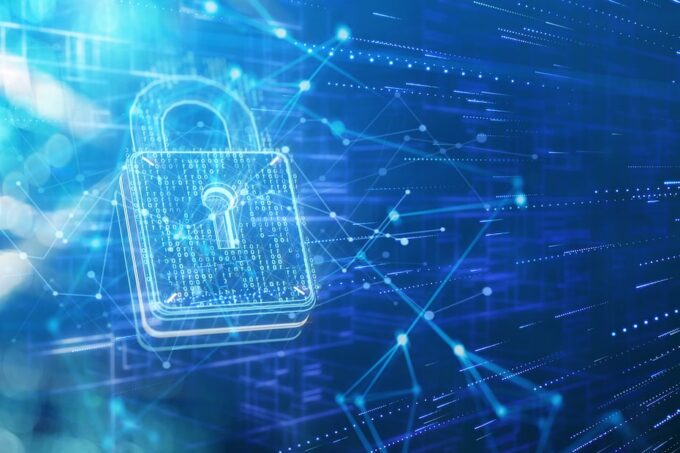Information is power. The internet is full of information that belongs to particular people, businesses, organizations, and governments. The 21st-century cyber world allows for digital versions of that information to be viewed, manipulated, and sent to any place with an internet connection.
However, this environment is also full of entities whose aim is to steal, alter or destroy any information that they can find. Even if it doesn’t steal the information, it wants to attach malware to it.
This is why cybersecurity is so important. Sending large files is especially risky because they are an easy and attractive target for malicious people who want to infect computer systems with viruses.
Safely sharing information with clients, suppliers, and partners can be challenging for any business and that’s why businesses look to handle their data with security and controls when they are collaborating.
How Important Is Collaboration?
For a business, secure large file sharing is tantamount to protecting its secrets. An advanced file-sharing system can also verify the identity of recipients to specific email addresses and/or encrypt files in transit to be unlocked by a password.
Collaboration is about trust and both or all parties participate in that trust when they share information. Collaboration can exist internally and externally. Internally, this practice can boost employee morale and stimulate new ways of thinking and moving forward. Externally, it’s also about growth.

One reason that a brand would collaborate with another brand is to open new, complementary markets and get that brand in front of new potential customers. A collaboration can vastly expand a brand’s reach and also provides a sort of ethos that the other brand’s customer base responds to. In other words, brands boost trust among their particular customers when they show trust in one another.
Collaborating with another brand can add buzz and become a kind of social happening. The narrative can be written by the parties, for the mutual financial benefit of both. It can change perspective, too. If, for instance, a brand has suffered bad publicity in the realm of environmental awareness, it can hook up with a firm renowned for sustainability to repair its reputation.
Collaboration is also an important concept in cyber security. Just as the goal of hackers and producers of malware is to disrupt, the goal of cyber security entities around the globe is to foil those potential disruptions. Where data is constantly on the move, traveling outside firewalls and organizational boundaries, a collaborative approach is needed to provide a secure environment that is least susceptible to hackers.
How Important Is Collaboration in Cybersecurity?
Cybercrime costs the world trillions of dollars in damage annually. Cybercrime involving stolen data can lead to a loss of revenue or worse. Theft of intellectual property, financial data, and embezzlement are all among the elements that businesses aim to protect themselves from and they will collaborate with other entities to accomplish this.
True security collaboration can only be achieved by eliminating silos at every level of cybersecurity detection, analysis, and response. Data silos are isolated points in a system where data is kept segregated, on purpose or accidentally, from other parts of an organization’s information and communication technology architecture.
Real-time information sharing, cyber fusion, and automated threat response play an important role in these silos and drive a collaborative response against threats. The exchange of information benefits everybody. Businesses can have a strong cybersecurity strategy, and mitigate the risk of malware attacks when they collaborate with others.

When information is shared across teams, organizations, governments, and private organizations, it results in the global dissemination of threat intelligence and guidelines’ making it easier to stop cyberattacks before they happen.
How Can You Keep Your Files Secure?
There are basic elements to keeping your files secure, whether you’re working on company devices or your own. Keeping your computers and devices updated is important because that’s how they will capture that collaborative knowledge that is disseminated from global cybersecurity agencies.
Your hard drives and mobile devices should both be encrypted and your passwords should be strong and frequently updated. Choosing a cloud service that relies on encryption is another way to collaborate with another agency to protect your assets.
Collaboration is one of the touchstones of both business and cybersecurity. It causes the sparks that lead to creative critical thinking and problem-solving. Just as it can positively affect employee productivity when done in-house, it can boost brand credibility when done with another brand.
This same collaborative approach is how cybersecurity firms keep up with malware and provide a unified defense against it. There will always be threats that could interrupt the business world in harmful ways and a collection agency that actively works against it will always be among the best lines of defense.
Conclusion

In conclusion, the intersection of collaboration and cyber security presents an interesting case study for understanding how to overcome security challenges while maximizing efficiency.
While there is no silver bullet solution to ensuring collaboration is secure, there are a few best practices that can be employed to ensure secure and efficient collaboration across multiple teams and organizations.
These best practices include:
- Using strong identity and access management protocols;
- Regularly assessing current vulnerabilities;
- Deploying secure email and other forms of electronic communication;
- Researching available cloud-based solutions;
- Developing a comprehensive disaster recovery plan;
- Requiring users to adhere to the principles of least privilege when logging into systems;
- Utilizing encryption, hashing, and digital signatures when sending critical data online;
- Implementing advanced authentication strategies like multi-factor authentication (MFA) or biometrics;
- Fostering an organizational culture that embraces collaboration with an understanding that cyber security is a priority.
By following these steps, organizations can create secure collaboration networks that allow users to securely access information in such a way as not to put any sensitive data or systems at risk from malicious actors.
Ultimately, it pays for organizations to invest in secure ways of collaborating if they value both the longevity of their operations as well as the privacy of their customers.









